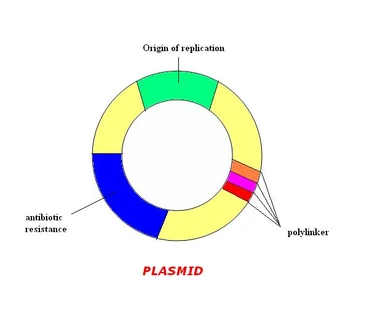Plasmids are circular pieces of DNA that replicate independently chromosomal DNA, ranging in size from 1000 bps to more than 10,000. They are most commonly found in prokaryotes and occaisonally archae, but are rare in eukaryotic organisms. Since their discovery in the early 1950s, scientists have used them in molecular cloning for a variety of applications such as gene therapy and genetic engineering.

Typical plasmid structure. Source: http://fa.wikipedia.org/wiki/%D9%BE%D8%B1%D9%88%D9%86%D8%AF%D9%87:PLASMID.JPG
These applications involve the use of plasmids as vectors to carry a particular gene of interest into another organism. This allows for an efficient way to produce large quantities of a protein, to create a transgenic organism (genetic engineering) or as a therapy to treat a genetic disease.
To accomplish this the plasmid is built to include a multiple cloning site, or polylinker site. This contains multiple restriction sites, which are targets for restriction endonucleases/enzymes. These enzymes will cut DNA at very specific sequences, allowing for the insertion of a gene into a plasmid. The gene of interest can then be inserted and ligated to the plasmid. Also included in plasmid vectors are some type of selection marker, to ensure uptake of the DNA. In bacterial systems, this selection marker is most often some form of antibiotic resistance. After transfecting bacteria with the engineered plasmid, they are grown on agar plates containing the antibiotic. Thus, only those cells that took up the plasmid will be able to survive while those that did not will die.